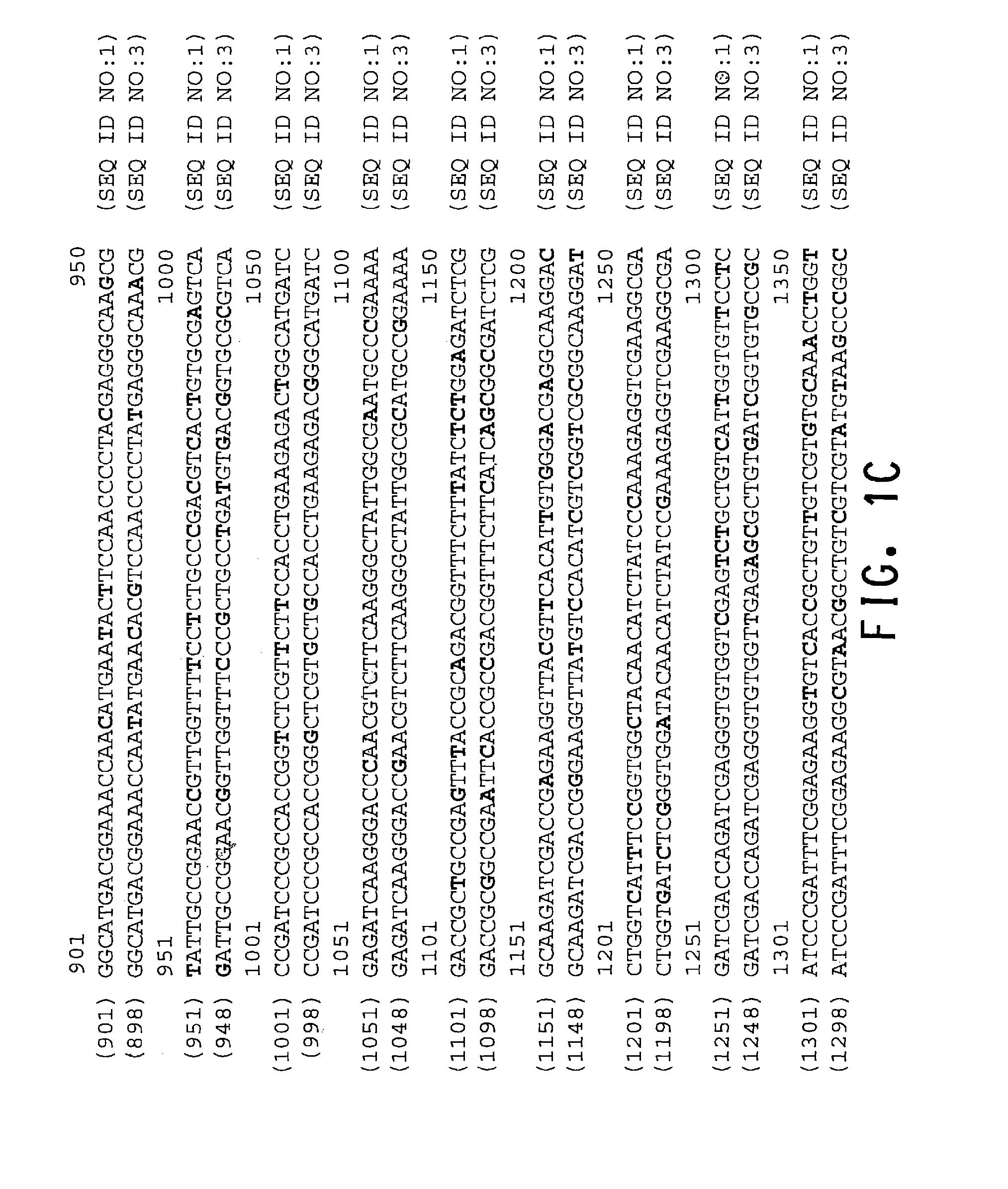Reducing byproduction of malonates in a fermentation process
a technology of fermentation process and malonate, applied in the field of biotechnology, can solve the problems of biocatalytic process, inability to continue the growth phase indefinitely, and relatively small range of products
- Summary
- Abstract
- Description
- Claims
- Application Information
AI Technical Summary
Problems solved by technology
Method used
Image
Examples
example 1
Identification of Publicly Available Genes Encoding Malonyl-CoA Synthetase
[0209]A gene cluster was identified to encode malonyl-CoA decarboxylase (MatA), malonyl-CoA synthetase (MatB) and a putative dicarboxylate carrier protein (MatC) in Rhizobium trifolii (An, J. H, & Y. S. Kim, Eur. J. Biochem., 257:395-402 (1998)).
[0210]Using the protein sequence encoding the Rhizobium trifolii malonyl-CoA synthetase (GenBank Accession No. AF117694 and No. AAC83455; SEQ ID NO:5), National Center for Biotechnology Information [“NCBI”] BLASTP 2.2.19 (Basic Local Alignment Search Tool; Altschul, S. F., et al., Nucleic Acids Res., 25:3389-3402 (1997); Altschul, S. F., et al., FEBS J., 272:5101-5109 (2005)) searches were conducted to identify sequences having similarity within the BLAST “nr” database (comprising all non-redundant GenBank CDS translations, the Protein Data Bank [“PDB”] protein sequence database, the SWISS-PROT protein sequence database, the Protein Information Resource [“PIR”] protein...
example 2
Synthesis of A Codon-Optimized Malonyl-CoA Synthetase Gene of Rhizobium leguminosarum bv. viciae 3841 for Yarrowia lipolytica
[0213]The codon usage of the malonyl-CoA synthetase gene of Rhizobium leguminosarum by. viciae 3841 was optimized for expression in Yarrowia lipolytica, in a manner similar to that described in U.S. Pat. No. 7,125,672.
[0214]Specifically, a codon-optimized malonyl-CoA synthetase gene (designated “MCS”, SEQ ID NO:3) was designed based on the coding sequence of the malonyl-CoA synthetase gene from Rhizobium leguminosarum by. viciae 3841 (“rMCS”; SEQ ID NOs:1 and 2, corresponding to GenBank Accession No. YP—766603) according to the Yarrowia codon usage pattern (U.S. Pat. No. 7,125,672), the consensus sequence around the ‘ATG’ translation initiation codon, and the general rules of RNA stability (Guhaniyogi, G. and J. Brewer, Gene, 265(1-2):11-23 (2001)). In addition to modification of the translation initiation site, 233 by of the 1515 by coding region (including ...
example 3
Generation of Construct pZP2-MCS, Comprising the Synthetic Malonyl-CoA Synthetase
[0215]Plasmid pZP2-MCS (FIG. 2) was constructed to enable expression of the synthetic, codon-optimized malonyl-CoA synthetase gene derived from Rhizobium leguminosarum by. viciae 3841 (Example 2) in the oleaginous yeast, Yarrowia lipolytica. The pZP2-MCS plasmid contained the following components listed in Table 4.
TABLE 4Description of Plasmid pZP2-MCS (SEQ ID NO: 7)RE Sites And NucleotidesWithin SEQ ID NO: 7Description Of Fragment And Chimeric Gene ComponentsBsiWI / AscI803 bp 5′ portion of Yarrowia Pox2 gene(318-1128)(GenBank Accession No. AJ001300)SphI / PacI649 bp 3′ portion of Yarrowia Pox2 gene(3836-4491)(GenBank Accession No. AJ001300)SwaI / BsiWIFBAIN::MCS::Pex20, comprising:(6713-318)FBAIN: Yarrowia lipolytica FBAIN promoter (U.S. Pat. No. 7,202,356);MCS: codon-optimized malonyl-CoA synthetase (SEQ IDNO: 3), derived from Rhizobium leguminosarum bv. viciae 3841(GenBank Accession No. YP_766603; SEQ ID ...
PUM
| Property | Measurement | Unit |
|---|---|---|
| Fraction | aaaaa | aaaaa |
| Fraction | aaaaa | aaaaa |
| Fraction | aaaaa | aaaaa |
Abstract
Description
Claims
Application Information
 Login to View More
Login to View More - R&D
- Intellectual Property
- Life Sciences
- Materials
- Tech Scout
- Unparalleled Data Quality
- Higher Quality Content
- 60% Fewer Hallucinations
Browse by: Latest US Patents, China's latest patents, Technical Efficacy Thesaurus, Application Domain, Technology Topic, Popular Technical Reports.
© 2025 PatSnap. All rights reserved.Legal|Privacy policy|Modern Slavery Act Transparency Statement|Sitemap|About US| Contact US: help@patsnap.com



